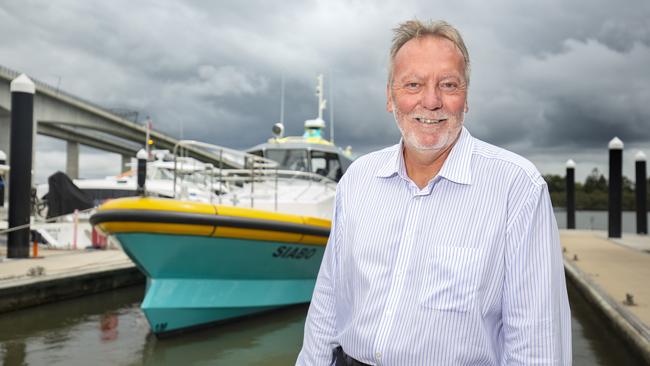Maritime firm wins 10-year pilot contract for Port of Brisbane
A local maritime company is seeking crews of sea pilots after winning a 10 year contract to safely guide the big ships into Port of Brisbane.

John Sugarman says human beings will always be required on a ship’s bridge despite technological advances in automated navigation systems.
Mr Sugarman’s Brisbane-based Australian Maritime Systems (AMS), which manages unmanned lighthouses and remote navigational aids around the country, has just won a 10-year contract to supply pilots to the Port of Brisbane. Pilots are responsible for steering ships in and out of port berths avoiding hazardous conditions and boat traffic.
“There is talk about autonomous ships,” said Mr Sugarman. “But ports are becoming busier and vessels are becoming bigger so pilots will be required for the foreseeable future.”
AMS’s subsidiary Poseidon Sea Pilots will employ 28 pilots in four boats to guide ships entering and exiting the Port of Brisbane at Fisherman Island.
The pilots will board ships at Mooloolaba, 100km north of Brisbane, before guiding them through Moreton Bay. The port has up to 5000 ship movements every year, with every vessel over 50 metres requiring a pilot.
Mr Sugarman said AMS could use its long experience in high-tech navigation aids to enhance the pilot service. The company was founded 17 years ago when the federal government outsourced coastal navigation to the private sector.
Traditional lighthouses, beacons and navigational buoys are increasingly being augmented by modern Vessel Traffic Systems (VTS), which use on-board transponders to provide vessel identification, positions, heading, vessel length and hazardous cargo information to other ships and land-based stations.
“The kernel of this technology grew out of the air traffic control system, and it has been modified for shipping,” said Mr Sugarman, a former mechanical engineer.
“After 9/11 there was a focus on watching where large vessels were located and where they had been. The US was particularly concerned about ships coming into San Francisco under the Golden Gate Bridge and something happening.”
He said modern navigation aids used by ships could be compared to aircraft which used pre-programmed flight paths entered into an on-board computer before take off.
AMS, which will employ about 50 people at its pilot operation in Brisbane, plans to expand its pilot service to other ports in the coming years. “Amalgamating our high-tech safety systems with pilotage was a natural extension for our business.” Mr Sugarman said.
In 2017, AMS sealed a $20m contract to provide a navigation control system for ships travelling through the Great Barrier Reef.
Mr Sugarman said there were few places on earth as challenging for shipping as the world-famous reef and the new technology helped safely guide captains through the area.
About 4000 commercial vessels a year pass through reef waters and one navigational error could result in an environmental tragedy.
The system is already used at 70 of the world’s major ports, including Rotterdam, Hong Kong and Shanghai, and uses a combination of radar, cameras and signals emitted from ships and satellites. AMA also has designed and installed a vessel traffic system at Western Australia’s Port Hedland, the world’s largest bulk export port.


